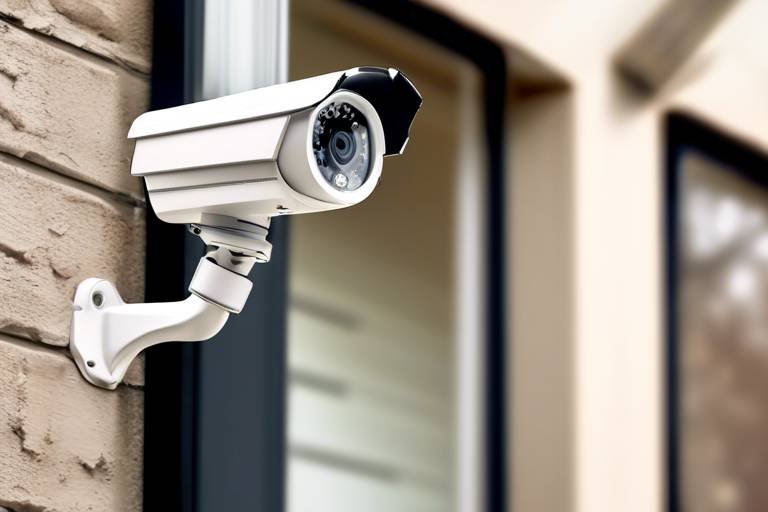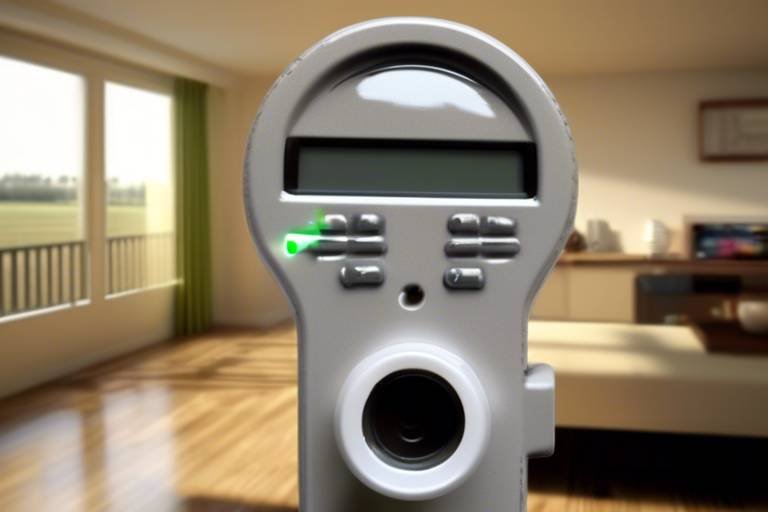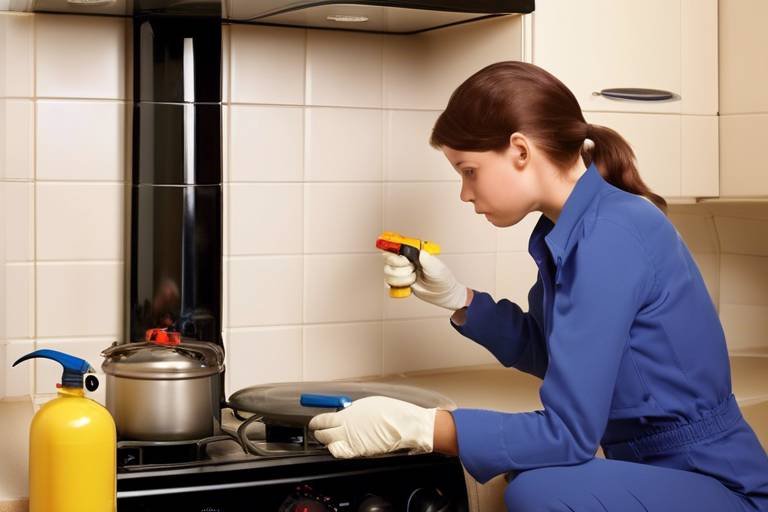Child Safety in Living and Play Areas
As parents and caregivers, ensuring the safety of our children in their living and play areas is one of the most important responsibilities we have. With the world around them full of potential hazards, it’s crucial to be proactive in identifying and mitigating risks. This article explores essential strategies and practices to ensure child safety in various environments, addressing potential hazards and offering effective solutions. From sharp objects lurking in the living room to the dangers of unsupervised outdoor play, we’ll cover it all. So, let’s dive into the world of child safety and discover how we can create a secure space for our little ones to thrive.
Identifying common hazards in living and play areas is crucial for child safety. Many everyday items can pose risks to children, often without us even realizing it. For instance, sharp objects like scissors or knives can lead to serious injuries if left unattended. Additionally, choking hazards are everywhere—small toys, coins, and even food can quickly become dangerous if a child puts them in their mouth. Electrical dangers, such as exposed wires or overloaded outlets, can also be a concern. By understanding these risks, caregivers can take the necessary steps to protect their children. Here’s a quick overview of some typical risks:
- Sharp Objects: Scissors, knives, glass, and other sharp items.
- Choking Hazards: Small toys, food items, and household objects.
- Electrical Dangers: Exposed wires, plugs, and overloaded outlets.
Creating a safe indoor environment is essential for children. A few simple adjustments can make a significant difference in preventing accidents. Start by securing furniture to the wall to prevent tipping, especially in rooms where children play. Using safety gates to block off stairs or hazardous areas can also help keep little explorers safe. Additionally, it’s vital to remove harmful substances from reach. This includes cleaning supplies, medications, and anything else that could be toxic. Remember, a little bit of foresight can go a long way in creating a child-friendly home.
Outdoor play can pose unique safety challenges. While fresh air and physical activity are essential for children, it’s important to keep a watchful eye on them. Supervision is key—always ensure that children are being watched while they play. When it comes to play equipment, make sure it’s age-appropriate and in good condition to prevent injuries. Additionally, having secure fencing around yards can keep children safe from wandering away or encountering potential dangers from outside. By taking these precautions, outdoor spaces can become safe havens for play and exploration.
Supervision is a critical element in ensuring child safety. It’s not just about being present; it’s about being actively engaged. Children are naturally curious and can find themselves in precarious situations if left unsupervised, even for a moment. Caregivers should remain vigilant and attentive, ready to intervene if necessary. Think of supervision as a safety net—while it may not prevent every accident, it certainly minimizes risks and provides a layer of protection. So, next time your child is playing, remember that your watchful eye is their best defense.
Using appropriate safety gear can significantly reduce the risk of injury. Whether your child is riding a bike, skating, or swimming, the right protective equipment is essential. Helmets are a must for cycling, while knee pads can protect against scrapes during skateboarding. For water activities, life jackets are non-negotiable. Investing in quality safety gear not only protects children but also instills a sense of responsibility about their safety. It’s like putting on armor before heading into battle—every little piece counts!
Educating children about safety is vital for their protection. Teaching kids to recognize dangers is a crucial step toward fostering independence. Use simple language and relatable scenarios to explain safety rules, whether it’s looking both ways before crossing the street or understanding the importance of not talking to strangers. Role-playing can be an effective way to prepare them for real-life situations. Remember, safety awareness is a skill that can empower children to make smart choices, and the earlier they learn, the better prepared they’ll be.
Being prepared for emergencies can save lives. It’s essential to have a plan in place for various situations, whether it’s a fire, natural disaster, or medical emergency. Create a family emergency plan that outlines what to do in different scenarios. Assemble a safety kit with essential supplies, including first-aid items, flashlights, and bottled water. Don’t forget to teach your children how to respond in emergencies—knowing who to call and what actions to take can make a world of difference when every second counts.
Utilizing community resources can enhance child safety. Many local programs offer workshops and educational sessions on child safety topics. Organizations often provide valuable information on everything from first-aid training to child-proofing homes. Engaging with these resources not only equips parents and caregivers with knowledge but also fosters a sense of community support. Don’t hesitate to reach out and discover what’s available in your area—together, we can create safer environments for our children.
Fostering a culture of safety within families and communities is essential. Start at home by promoting safety awareness and encouraging open communication about risks and safety practices. Involve children in discussions about safety; ask them what they think about certain hazards and how they would respond. This inclusion not only empowers them but also reinforces the importance of safety in their everyday lives. Remember, safety isn’t just a set of rules; it’s a mindset that should be nurtured from a young age.
Q: What are the most common hazards in the home?
A: Common hazards include sharp objects, choking hazards, and electrical dangers. Always be vigilant and childproof your living spaces.
Q: How can I childproof my home effectively?
A: Secure furniture to the wall, use safety gates, and remove harmful substances from reach. Regularly inspect your home for potential risks.
Q: What safety gear should my child wear during outdoor activities?
A: Essential safety gear includes helmets for biking, knee pads for skating, and life jackets for swimming.
Q: How can I teach my child about safety?
A: Use simple language, role-play scenarios, and encourage open discussions about safety rules and awareness.
Q: What should I include in an emergency kit?
A: Your emergency kit should include first-aid supplies, bottled water, flashlights, batteries, and any necessary medications.
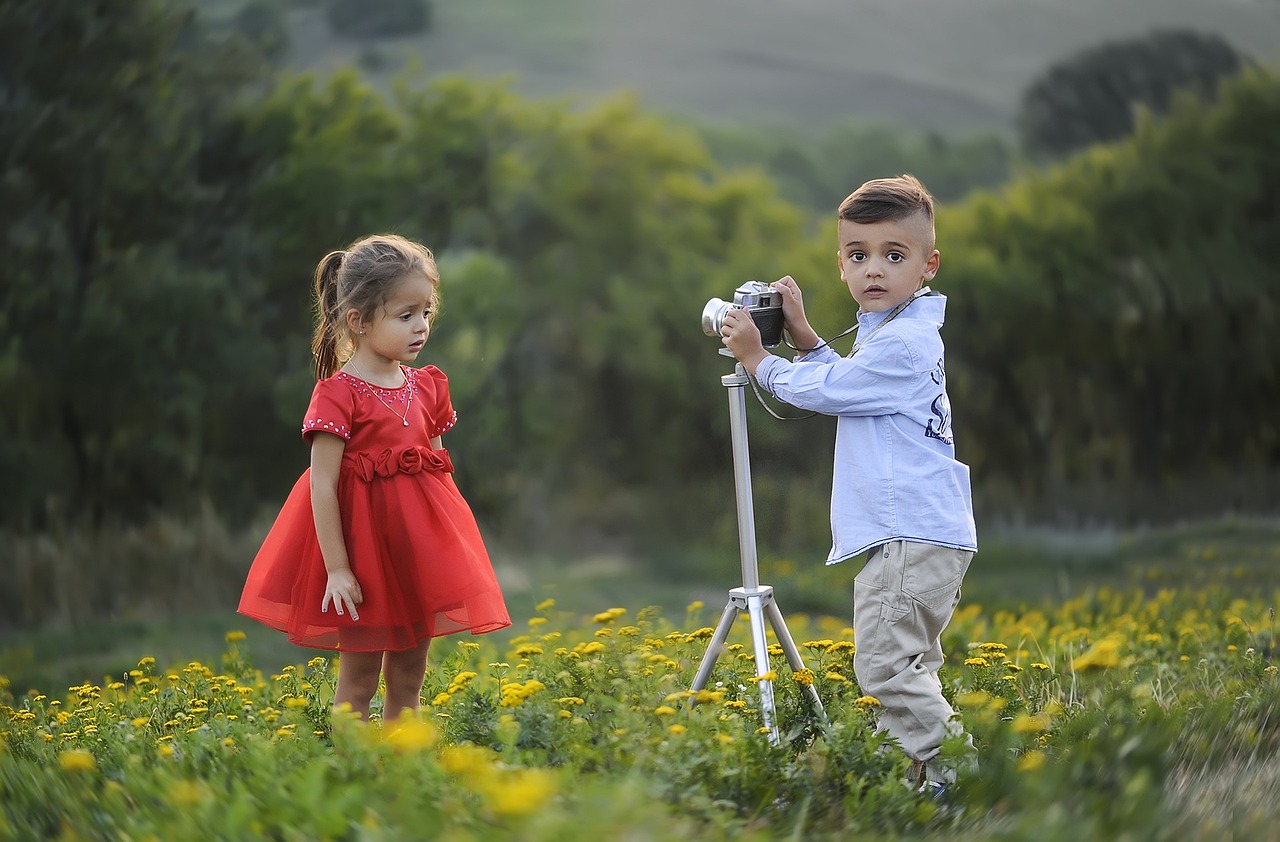
Understanding Common Hazards
This article explores essential strategies and practices to ensure child safety in various living and play environments, addressing potential hazards and offering effective solutions for parents and caregivers.
Identifying common hazards in living and play areas is crucial for child safety. As parents and caregivers, it’s our responsibility to create environments where children can thrive without the constant worry of injury. You might think your home is a safe haven, but did you know that everyday items can pose serious risks? Let's take a closer look at some of these potential threats.
First off, sharp objects are often lurking around the house. From kitchen knives to scissors, these items can easily become dangerous if left within reach of curious little hands. It’s essential to store such tools in high cabinets or locked drawers. Imagine a toddler reaching for a shiny knife—what a scary thought!
Another common hazard is choking hazards. Small toys, coins, and even food items can pose significant risks. Children, especially those under the age of three, tend to explore the world by putting things in their mouths. To mitigate this risk, it’s wise to regularly check play areas and remove any small items that could lead to choking. You can even create a checklist to ensure all toys meet safety standards and are age-appropriate.
Let’s not forget about electrical dangers. Exposed cords, unprotected outlets, and faulty wiring can turn a fun playroom into a dangerous zone. Covering outlets with safety caps and keeping cords out of reach can help prevent accidents. Additionally, teaching children about the dangers of electricity can instill a sense of caution from a young age.
Here’s a quick summary of common hazards to watch out for:
- Sharp Objects: Knives, scissors, and other cutting tools.
- Choking Hazards: Small toys, coins, and food items.
- Electrical Dangers: Exposed cords and unprotected outlets.
In addition to these, consider environmental factors like toxic substances. Cleaning supplies, medications, and even some plants can be harmful if ingested. Always store these items in locked cabinets or high shelves, and educate your children about what they should never touch or taste.
Lastly, falls are a significant concern, especially in play areas. Whether it’s a slippery floor or climbing equipment that isn’t properly secured, falls can lead to serious injuries. Regularly inspect play equipment and ensure that soft surfaces, such as grass or rubber mats, are in place to cushion any potential falls.
By understanding and recognizing these common hazards, we can take proactive steps to create safer living and play environments for our children. It’s all about being vigilant and prepared. After all, a safe child is a happy child!
Q: How can I childproof my home effectively?
A: Start by identifying potential hazards in each room, securing furniture, covering outlets, and removing harmful substances. Regularly reassess your home as your child grows.
Q: What should I do if my child chokes?
A: Remain calm and perform the Heimlich maneuver if necessary. It’s also crucial to have a first aid kit handy and know how to use it. Consider taking a CPR course to be prepared.
Q: How often should I check my child’s play area for hazards?
A: Regularly check play areas, ideally every few weeks, and after any significant changes, like new toys or furniture. Keeping a checklist can help you stay organized.

Safe Indoor Environments
Creating a safe indoor environment is not just a precaution; it's a necessity for the well-being of children. As parents and caregivers, we often think about the fun and creativity that can flourish in our homes, but it's equally important to consider the potential hazards that lurk around every corner. From sharp edges on furniture to toxic cleaning supplies, the risks can be surprising. So, how do we transform our living spaces into safe havens for our little ones?
First and foremost, childproofing is key. This means taking a close look at your home and identifying areas that could pose a threat. Start with the basics: secure heavy furniture like bookshelves and dressers to the wall to prevent tipping. Children are naturally curious, and they will climb if they see something interesting. In addition, consider using safety gates to block off stairways or rooms that are off-limits. These simple measures can make a world of difference in preventing accidents.
Another critical aspect of creating a safe indoor environment is removing harmful substances from reach. It’s not just about keeping dangerous items out of sight; it’s about ensuring they are completely inaccessible. Store cleaning supplies, medications, and any other hazardous materials in locked cabinets or high shelves. Remember, children are great at finding things we think are hidden! You might think a bottle of bleach is safely tucked away, but a determined toddler can surprise you.
Moreover, consider the importance of soft surfaces in play areas. Hard floors can lead to nasty bumps and bruises during playtime. Investing in soft play mats or area rugs can cushion falls and provide a safer play environment. Think of it like creating a mini playground inside your home, where the risks are minimized, and the fun can thrive!
Additionally, it's essential to inspect toys regularly. Make sure they are in good condition and appropriate for your child's age. Toys with small parts can be choking hazards, and broken toys can lead to injuries. If you notice any wear and tear, it's time to toss them out. A little diligence in this area can prevent a lot of heartache.
Lastly, don't forget about lighting. A well-lit home can significantly reduce the risk of accidents. Ensure that all rooms, especially staircases and hallways, are adequately illuminated. Night lights can also be a great addition to children's bedrooms and bathrooms, helping them navigate their space safely during the night. Think of lighting as your home's best friend in keeping your little ones safe.
In summary, creating a safe indoor environment for children is about being proactive and vigilant. By being aware of potential hazards and taking steps to mitigate them, you can create a space where children can explore and play freely, while keeping safety at the forefront. Remember, a safe home is a happy home!
- What are the first steps to childproofing my home? Start by securing heavy furniture, using safety gates, and removing hazardous materials from reach.
- How can I ensure my child's toys are safe? Regularly inspect toys for small parts and damage, and ensure they are age-appropriate.
- What type of lighting is best for child safety? Use bright, even lighting in all areas, especially in stairways and play areas, and consider night lights for bedrooms.
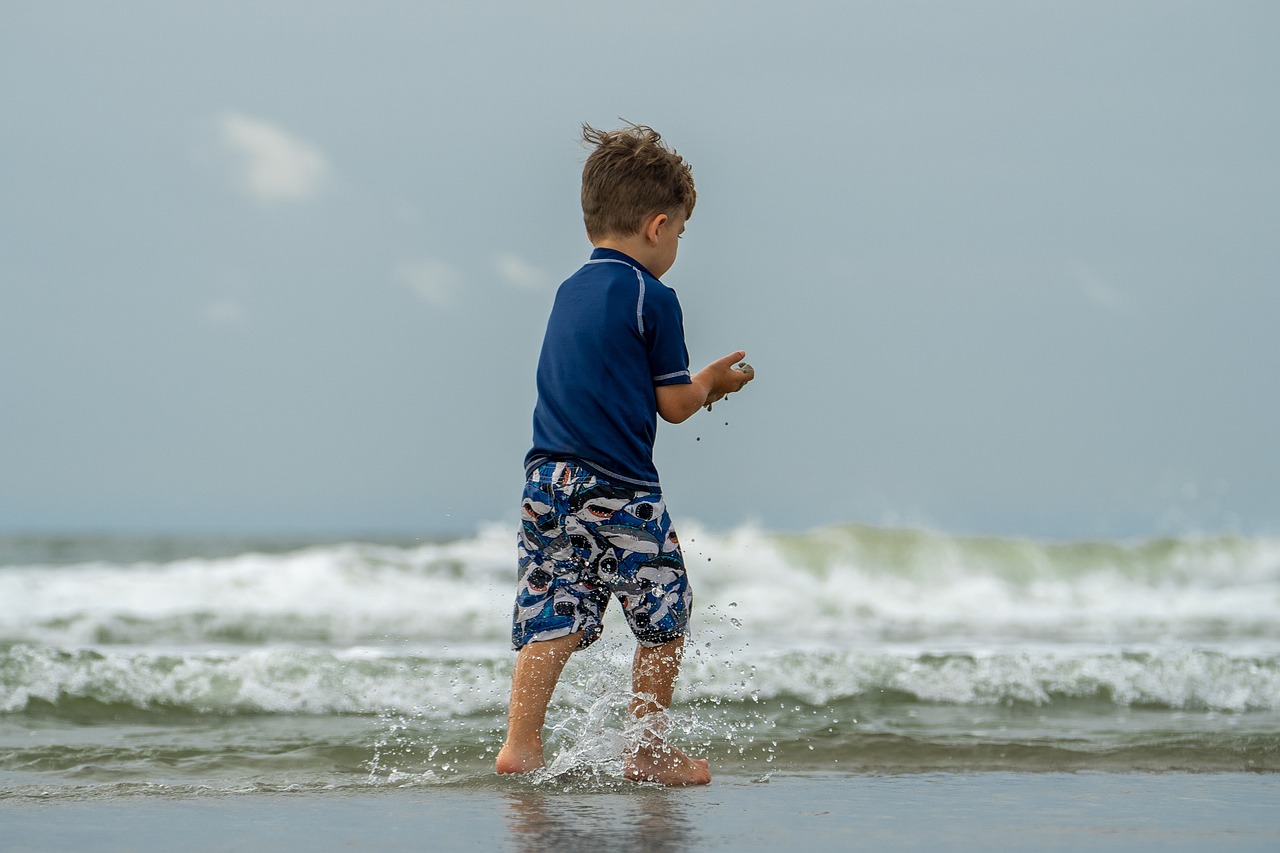
Outdoor Safety Considerations
When it comes to outdoor play, the excitement is palpable, but so are the risks. Children are naturally curious, which can lead them into situations that may pose safety hazards. One of the first things to consider is supervision. Always keep an eye on your little ones while they’re playing outside. It’s not just about being present; it’s about being engaged. You want to be close enough to intervene if a situation escalates, yet far enough to allow them the freedom to explore. Think of it as being the safety net in their circus act—always ready to catch them if they fall.
Next on the list of outdoor safety considerations is the play equipment. Whether it’s a swing set, a slide, or a climbing frame, ensure that all equipment is age-appropriate and in good condition. Regularly inspect these structures for any signs of wear and tear. For instance, rusty swings or sharp edges can turn a fun day at the park into a trip to the emergency room. To further enhance safety, consider the surface underneath the equipment; soft materials like mulch or rubber mats can help cushion falls.
Another important aspect is the fencing around your yard or play area. A secure fence serves as a barrier against potential dangers, such as busy roads or unfamiliar animals. Make sure the fence is tall enough to deter climbing and that there are no gaps that a child could slip through. It’s like having a moat around your castle—keeping the kingdom (and your little ones) safe from external threats.
Weather conditions also play a significant role in outdoor safety. Be mindful of the temperature and environmental factors. On hot days, ensure that children stay hydrated and take breaks in the shade. Conversely, during colder months, dress them appropriately to prevent hypothermia. A quick check of the weather forecast can save you from uncomfortable and unsafe situations. Remember, just like you wouldn’t send them out in a rainstorm without an umbrella, don’t let them play outside in extreme conditions.
Lastly, teaching children about their surroundings can be one of the most empowering safety measures. Encourage them to recognize potential hazards, such as uneven ground, slippery surfaces, or even strange animals. By instilling a sense of awareness, you're not only protecting them in the moment but also equipping them with skills they'll use for a lifetime. It’s similar to giving them a map to navigate the wild jungle of outdoor play.
In conclusion, outdoor play is a vital part of childhood development, but it’s crucial to approach it with a safety-first mindset. By ensuring proper supervision, maintaining play equipment, securing the area, being mindful of the weather, and educating your children, you can create a fun and safe outdoor environment for your little adventurers.

Importance of Supervision
When it comes to child safety, the significance of supervision cannot be overstated. Imagine a bustling playground filled with laughter and energy—children running, climbing, and exploring. It's a joyous scene, but it can also be a recipe for disaster without vigilant oversight. Active supervision means more than just keeping an eye on kids; it involves being engaged, aware, and ready to intervene when necessary. After all, children are naturally curious and often unaware of the dangers lurking around them.
One of the key aspects of effective supervision is understanding the environment where children play. For instance, outdoor areas can present unique challenges, such as uneven terrain, nearby roads, or even bodies of water. Parents and caregivers should be well-acquainted with the specific risks associated with these locations. It’s essential to be present, not just physically, but mentally as well. This means putting away distractions like smartphones and focusing entirely on the children’s activities.
In addition to being present, caregivers should also be proactive. This includes setting clear boundaries and rules for playtime. Children thrive on structure, and knowing what is expected can help them navigate their environment safely. Here are some strategies to enhance supervision:
- Establish Safe Zones: Designate specific areas where children can play freely without the risk of wandering into dangerous spaces.
- Be Engaged: Play with your children! Not only does this foster bonding, but it also allows you to monitor their activities closely.
- Educate Children: Teach them about potential dangers and the importance of staying within sight.
Moreover, supervision must adapt as children grow and develop new skills. Toddlers require constant watchfulness, while older children might need guidance on making safe choices independently. As children gain confidence in their abilities, caregivers should gradually shift from direct supervision to a more supportive role, encouraging them to assess risks themselves while remaining available for guidance.
It’s also crucial to recognize that supervision is not just about preventing accidents; it’s about promoting a safe and nurturing environment where children can thrive. By being actively involved, caregivers can not only mitigate risks but also create opportunities for learning and development. Think of supervision as a protective umbrella—while it shields children from immediate dangers, it also fosters an atmosphere where they feel secure enough to explore and grow.
In conclusion, the importance of supervision in ensuring child safety cannot be overlooked. It’s about being present, proactive, and prepared to step in when necessary. The more engaged caregivers are, the safer children will be, allowing them to enjoy their adventures while minimizing risks. Remember, a watchful eye today can prevent a world of hurt tomorrow.
Q: How can I ensure I'm effectively supervising my child?
A: Stay engaged with your child’s activities, set clear boundaries, and eliminate distractions like phones while supervising.
Q: At what age can children start playing unsupervised?
A: This varies by child, but generally, children can begin to play unsupervised around the age of 8-10, depending on their maturity and the safety of the environment.
Q: What should I do if I can't supervise my child continuously?
A: Arrange playdates with other parents, utilize safe play areas, and establish rules for your child to follow when playing without direct supervision.

Child Safety Gear
When it comes to keeping our little ones safe during playtime, is an absolute game-changer. Think of it as the protective armor for your child while they embark on their adventures, whether indoors or outdoors. Just like knights donned their armor to fend off dangers, children too can benefit from wearing the right gear to minimize risks and enhance their safety. But what exactly should you consider when choosing safety gear for your child? Let’s dive into the essentials!
First off, let's talk about the most recognized safety gear: helmets. These are crucial for activities like biking, skateboarding, or rollerblading. A well-fitted helmet can significantly reduce the risk of head injuries. It’s important to choose a helmet that meets safety standards and fits snugly on your child’s head. Remember, a helmet is only effective if it’s worn correctly!
Next on the list are knee and elbow pads. These little pieces of equipment are often overlooked, yet they can be lifesavers. When children are learning to ride bikes or skate, falls are inevitable. Knee and elbow pads provide that extra cushioning, absorbing the impact and protecting those precious joints. Just imagine how much more confident your child will feel knowing they have a little extra protection while trying to master their skills!
For those who enjoy water activities, life jackets are non-negotiable. Whether it's a pool party or a day at the beach, a properly fitted life jacket can be the difference between a fun day and a potential tragedy. Always check that the life jacket is Coast Guard approved and appropriate for your child's weight and size. It's like having a safety net that allows them to explore the water while keeping them safe.
In addition to these specific items, it’s essential to consider the general clothing your child wears during outdoor play. Opt for durable, weather-appropriate clothing that allows for free movement while also providing some protection against scrapes and sun exposure. For instance, long sleeves and pants can help shield against insect bites and scratches from branches while playing in the yard.
Finally, let’s not forget about the importance of footwear. Proper shoes can prevent slips and falls, which are common hazards during play. Ensure that your child wears shoes that fit well and provide adequate support, especially when engaging in physical activities. Think of shoes as the foundation of their playtime adventures—strong and reliable!
Now, you might be wondering how to encourage your child to wear this safety gear consistently. One effective strategy is to make it a part of the routine. Explain to them why safety gear is important in a fun and engaging way. You could even turn it into a game, where they earn points for wearing their gear every time they play. The more involved they feel, the more likely they are to embrace these safety measures!
In summary, investing in the right child safety gear is not just about preventing injuries; it’s about fostering an environment where children can explore, learn, and grow with confidence. It’s like giving them a shield that allows them to conquer their world while keeping them safe. So, gear up and let your little adventurers roam free—safely!
- What type of helmet should my child wear? Look for a helmet that fits snugly, meets safety standards, and is appropriate for the activity your child is engaging in.
- How do I know if the safety gear fits properly? Safety gear should fit snugly but not be too tight. Make sure your child can move comfortably without the gear shifting excessively.
- Are all life jackets the same? No, life jackets come in different types and sizes. Always choose one that is Coast Guard approved and suitable for your child's weight and height.
- How can I encourage my child to wear safety gear? Make it a fun part of their routine, explain its importance, and involve them in the selection process of their gear.

Teaching Safety Awareness
Teaching children about safety awareness is not just a one-time event; it’s an ongoing conversation that evolves as they grow. Imagine a world where every child knows how to recognize potential dangers and how to respond appropriately. This is not just a dream—it's a reality that can be achieved through consistent education and engagement. So, how can we effectively instill this vital knowledge in our little ones?
First and foremost, it’s important to create a safe learning environment. Children absorb information best when they feel secure. Start by discussing safety in a calm and friendly manner. Use everyday situations as teaching moments. For instance, when crossing the street, explain the importance of looking both ways and waiting for the walk signal. This not only teaches them about road safety but also reinforces the idea that safety is a part of their daily lives.
Incorporating interactive activities can also enhance their understanding. For example, you can set up a mock emergency drill at home. Role-playing different scenarios—like what to do if there’s a fire or how to respond to a stranger—can be both fun and educational. Children learn best when they can actively participate, so consider using games that promote safety awareness. For instance, a scavenger hunt for identifying safe versus unsafe items around the house can be a delightful way to engage them.
Moreover, it’s crucial to teach children about the importance of trusting their instincts. Encourage them to speak up if something feels off or unsafe. This not only empowers them but also builds their confidence in making decisions. You might say, “If someone makes you feel uncomfortable, it’s okay to walk away and tell a trusted adult.” This simple message can have a profound impact on their safety.
To further solidify their understanding, consider using visual aids. Charts and posters depicting safety rules can serve as constant reminders. Hang them in areas where children frequently play or spend time. For instance, a colorful poster outlining basic fire safety rules or how to safely use playground equipment can be both eye-catching and informative.
Finally, make safety discussions a regular part of your family routine. Whether it’s during dinner or before bedtime, sharing stories about safety incidents can help children relate to real-life situations. Ask them questions like, “What would you do if you saw someone fall at the park?” This encourages critical thinking and reinforces their learning.
In summary, teaching safety awareness is a multifaceted approach that combines education, engagement, and practical application. By fostering an environment where children feel safe to learn and express themselves, we can equip them with the tools they need to navigate the world safely. Remember, safety isn’t just a lesson; it’s a lifelong skill that every child should possess.
- What age should I start teaching my child about safety? It’s never too early to start! Begin with simple concepts as soon as they can understand basic instructions, typically around age 2 or 3.
- How can I make safety lessons fun? Use games, role-playing, and interactive activities to keep your child engaged while learning about safety.
- What are some essential safety rules to teach my child? Focus on basic rules such as looking both ways before crossing the street, not talking to strangers, and what to do in emergencies.
- How often should I revisit safety topics with my child? Regular discussions are key. Try to incorporate safety lessons into your daily routine, making it a natural part of life.

Emergency Preparedness
Being prepared for emergencies is not just a precaution; it's a necessity that can make all the difference in critical situations. Imagine a fire breaking out or a natural disaster striking your neighborhood. Would you be ready? Having a solid emergency plan in place can mean the difference between chaos and calm. It's essential for parents and caregivers to take proactive steps to ensure the safety of their children during unforeseen events.
First and foremost, creating an emergency plan is crucial. This plan should outline what to do in various scenarios, such as fires, earthquakes, or severe weather. Involve your children in the planning process; this not only educates them about potential dangers but also empowers them to take action when needed. For example, establish a meeting point outside your home where everyone will gather in case of an emergency. This simple step can prevent confusion and ensure that everyone is accounted for.
Next, assembling a safety kit is a key part of your emergency preparedness strategy. This kit should be easily accessible and contain essential items that can sustain your family for at least 72 hours. Here's a quick overview of what to include in your emergency kit:
| Item | Purpose |
|---|---|
| Water | At least one gallon per person per day |
| Non-perishable food | Easy-to-carry snacks like granola bars, canned goods |
| First-aid kit | To treat minor injuries |
| Flashlight | For visibility during power outages |
| Batteries | To power your flashlight and other devices |
| Whistle | To signal for help |
| Personal documents | Keep copies of identification, medical records, and insurance policies |
Once you have your emergency kit ready, it's vital to teach your children how to use the items within it. For instance, show them how to apply a bandage from the first-aid kit or how to use the flashlight. This not only builds their confidence but also ensures they are prepared to assist in emergencies if needed.
Lastly, regular drills can reinforce your emergency plan and keep everyone on their toes. Just like fire drills in schools, practicing your family’s emergency plan can help make it second nature. Schedule these drills at least twice a year, and make it a fun activity—perhaps with a reward for participation! This way, children will not only remember what to do but will also feel more secure knowing they have a plan.
In conclusion, emergency preparedness is a vital aspect of child safety that every caregiver should prioritize. By creating a comprehensive plan, assembling a safety kit, teaching your children about safety measures, and conducting regular drills, you can ensure that your family is ready for any situation. Remember, being prepared is not just about having the right supplies; it’s about fostering a mindset of safety and awareness in your children.
- What should I include in my emergency kit?
Include water, non-perishable food, a first-aid kit, flashlight, batteries, whistle, and personal documents. - How often should I review my emergency plan?
It's recommended to review your emergency plan at least twice a year. - How can I teach my children about emergencies?
Involve them in creating the emergency plan and conduct regular drills.
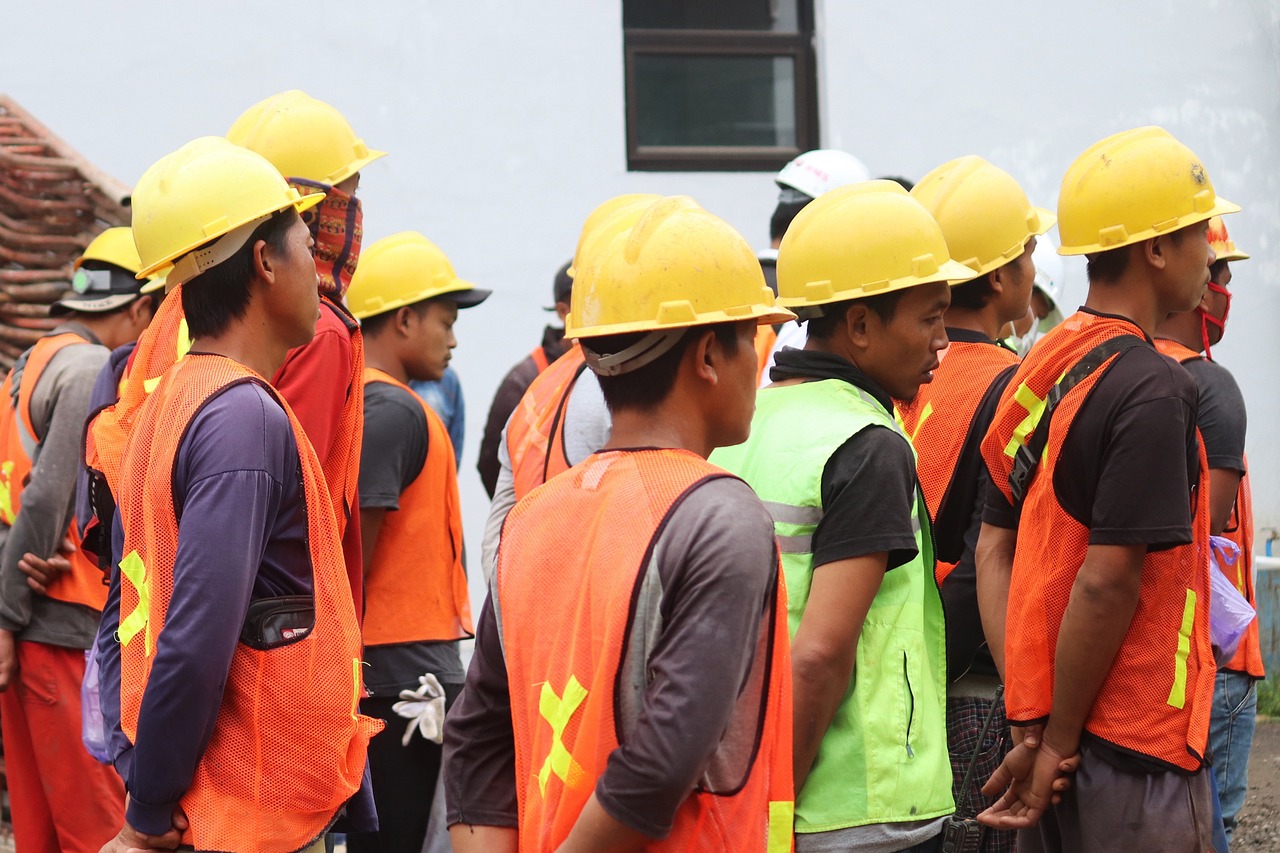
Community Resources for Safety
When it comes to ensuring child safety, community resources can be a game-changer. These resources provide parents and caregivers with the tools, knowledge, and support necessary to create a safer environment for children. From local workshops to educational programs, the options are plentiful and can significantly enhance awareness and practices surrounding child safety.
Many communities offer workshops and seminars that focus on various safety topics, such as first aid, CPR, and emergency preparedness. These programs not only educate parents but also empower them to take proactive steps in safeguarding their children. Imagine being equipped with the skills to handle a choking incident or a minor injury—this knowledge can make all the difference in a critical moment.
Additionally, local organizations often provide resources like safety kits, which may include essential items such as fire extinguishers, first aid supplies, and emergency contact information. Having these kits readily available at home can prepare families for unexpected situations. Furthermore, many communities collaborate with schools to organize safety fairs, where families can learn about safety practices in a fun and engaging environment.
Another valuable resource is community policing programs that focus on child safety. These initiatives often involve local law enforcement officers who visit schools and community centers to educate children about personal safety, including how to recognize dangerous situations and whom to contact for help. This not only builds trust between children and law enforcement but also instills a sense of security in the community.
Moreover, many neighborhoods have online platforms or social media groups where parents can share safety tips, report incidents, and discuss concerns. These platforms serve as a virtual support network, allowing caregivers to stay informed about local safety issues and collaborate on solutions. Being part of such a community can foster a sense of belonging and collective responsibility for child safety.
In conclusion, leveraging community resources is an effective way to enhance child safety. By participating in local programs, engaging with community organizations, and utilizing available tools, parents and caregivers can create a safer environment for their children. Remember, safety is a shared responsibility, and together, we can make a significant impact.
- What types of community resources are available for child safety?
Community resources include workshops, safety fairs, online support groups, and programs run by local law enforcement. - How can I find local workshops on child safety?
Check with your local community center, schools, or online platforms to find upcoming workshops and events. - Are there any specific safety kits recommended for families?
Yes, safety kits should include first aid supplies, fire extinguishers, emergency contact information, and any other relevant safety items.
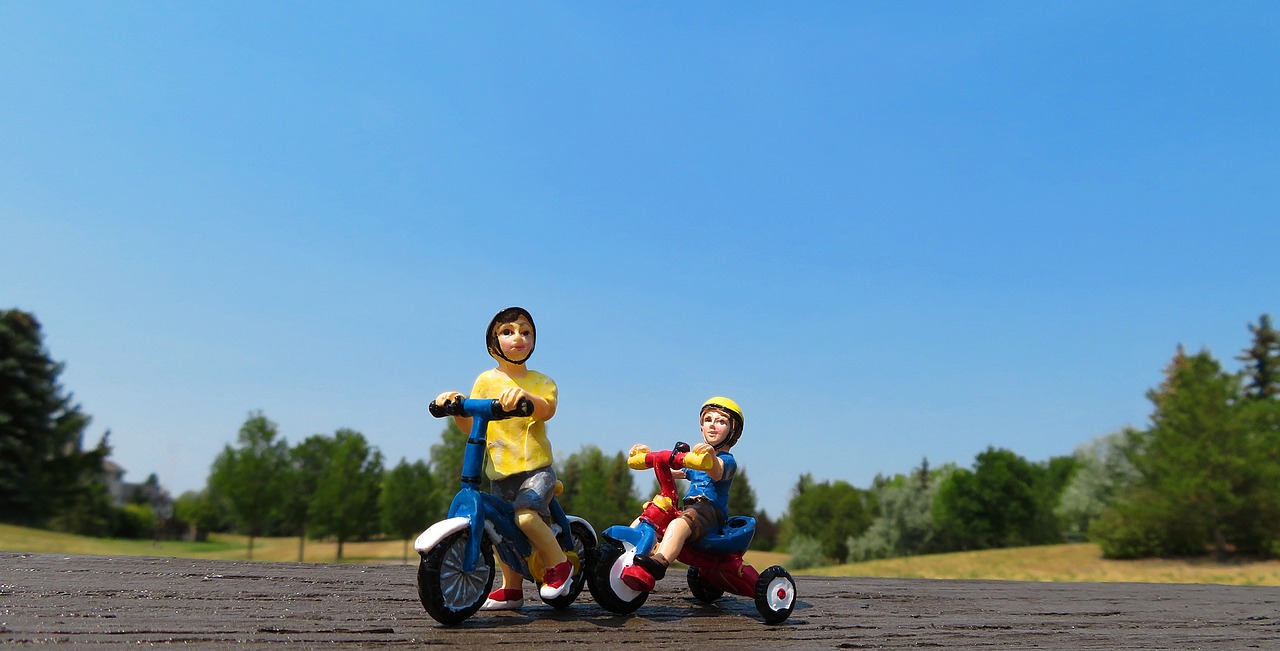
Creating a Safety Culture
Creating a culture of safety within families and communities is not just a good idea; it's a necessity when it comes to protecting our children. Think of it like building a fortress around your loved ones, where every brick represents a precaution, a conversation, or a shared understanding of safety practices. But how do we go about establishing this culture? It starts with open communication. Encourage your children to express their thoughts and concerns about safety. When kids feel comfortable discussing their fears or experiences, it opens the door for valuable learning opportunities.
Incorporating safety into everyday conversations makes it a normal part of life. For instance, while driving, you might remind your child about the importance of wearing seat belts or looking both ways before crossing the street. These small discussions can significantly impact their understanding of safety. Moreover, involving children in safety practices can make them feel empowered. For example, let them help in creating a fire escape plan for your home. By participating in these activities, they not only learn but also take ownership of their safety.
It's also essential to lead by example. Children are observant; they often mirror the behaviors of adults. If they see you consistently following safety rules, they are more likely to do the same. This includes everything from wearing helmets while biking to practicing safe cooking habits in the kitchen. The more they see safety as a priority in your actions, the more likely they are to internalize those values.
Additionally, consider organizing community events focused on safety. These could be workshops, safety fairs, or even simple neighborhood gatherings where safety topics are discussed. Community involvement not only strengthens relationships but also reinforces the idea that safety is a shared responsibility. When parents and caregivers come together to discuss strategies, it fosters a sense of unity and collective vigilance.
Lastly, remember that safety culture is an ongoing process. Regularly revisit safety practices and update them as children grow and their environments change. This could mean reassessing play equipment in your backyard or discussing new safety rules as kids start school. The goal is to create a dynamic culture where safety is not just a one-time conversation but a continuous commitment.
- What is a safety culture? A safety culture refers to the shared values, beliefs, and behaviors that prioritize safety within a group or community.
- How can I involve my children in safety practices? You can involve them by having discussions about safety, letting them help create safety plans, and encouraging them to express their concerns.
- Why is leading by example important for child safety? Children learn by observing adults; if they see you practicing safety, they are more likely to adopt those behaviors themselves.
- What role does community play in creating a safety culture? Community involvement helps reinforce safety practices and fosters a collective responsibility for child safety.
Frequently Asked Questions
-
What are the most common hazards in living and play areas for children?
Common hazards include sharp objects, choking hazards such as small toys or food items, and electrical dangers like exposed wires. It's crucial for caregivers to regularly inspect these areas to identify and mitigate potential risks.
-
How can I childproof my home effectively?
Childproofing can be achieved by securing heavy furniture to the walls, using safety gates to block off stairs, and keeping harmful substances such as cleaning supplies out of reach. Consider investing in corner guards for sharp furniture edges and outlet covers for electrical sockets.
-
What should I consider for outdoor safety?
When it comes to outdoor play, supervision is key. Ensure that play equipment is age-appropriate and in good condition. Secure fencing around play areas is also vital to prevent children from wandering off. Always check for potential hazards like sharp objects or uneven ground.
-
Why is supervision important for child safety?
Active supervision allows caregivers to respond quickly to any potential dangers. Children can be unpredictable, so staying engaged during playtime helps prevent accidents and keeps them safe from harm.
-
What safety gear should my child use during activities?
Essential safety gear varies by activity but commonly includes helmets for biking or skating, knee and elbow pads for rollerblading, and life jackets for water activities. Always ensure that the gear fits properly and is appropriate for the activity.
-
How can I teach my child about safety awareness?
Teaching safety awareness involves discussing potential dangers and establishing clear safety rules. Role-playing various scenarios can also help children learn how to respond appropriately in emergencies, making the lessons more memorable.
-
What should I include in an emergency preparedness plan?
Your emergency plan should include contact information for family members, a meeting place, and a list of emergency services. Additionally, assemble a safety kit with essentials like first aid supplies, water, and non-perishable food items.
-
Are there community resources available for child safety?
Yes! Many communities offer workshops, programs, and organizations focused on child safety. Check with local schools, community centers, or health departments to find resources that provide education and support on safety topics.
-
How can I promote a culture of safety in my family?
Encouraging open communication about safety concerns and involving children in safety practices can help promote a culture of safety. Regular discussions about safety rules and making safety a shared responsibility can reinforce its importance in daily life.













